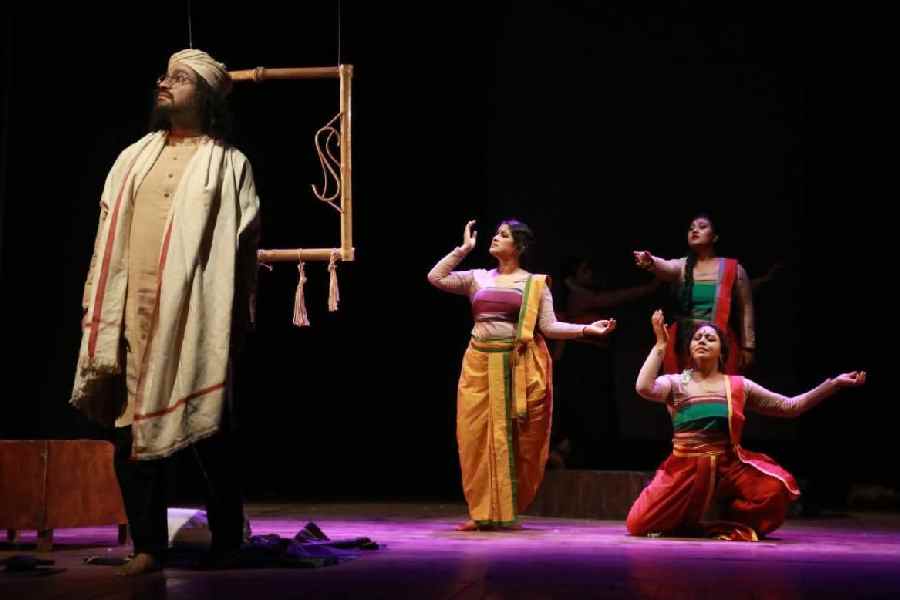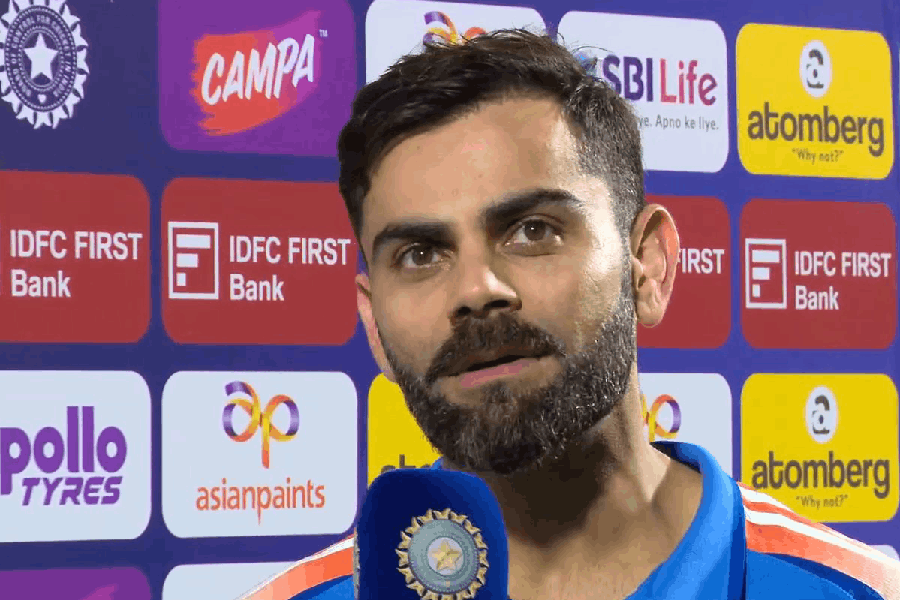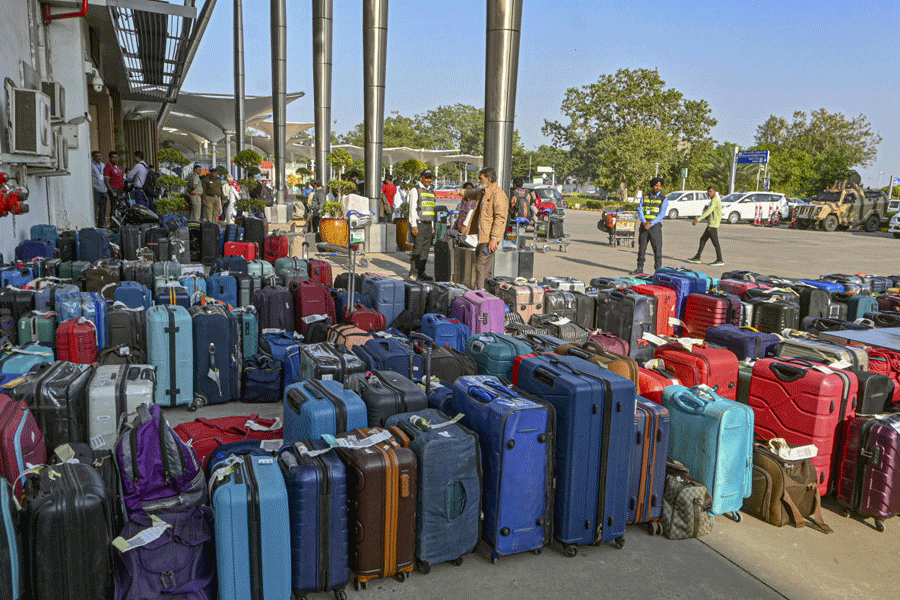Rarely does one come across an interpretation of Rabindranath Tagore’s oeuvre that is original in conception and innovative in execution. Jalpaiguri-based Yaman’s Chhiye Chhiye Radha is an exception. Conceptualised and directed by Saibal Basu, this tour de force is loosely structured on Bhanusingha Thakurer Padabali (1884), which Tagore mostly composed when he was 16. Described as a collection of Vaishnava lyrics written in Brajabuli, this anthology offers much more than regular Radha-Krishna lyrics.
Basu picks up “Marano re tuhu mama Shyam-saman”, a solemn lyric composed soon after Kadambari Devi’s death in 1884 (Tagore dedicated this slender volume to her), and designs the production in the shadow of death and detachment. The title, Chhiye Chhiye Radha, is inspired by a line from the lyric and is a statement on the ‘Radha-bhava’, which characterises this phase of Tagore’s creative career. Without referring to Tagore’s ‘jiban-debata’ concept and overtly depending on the poetic muse figure, this 100-minute-long production opens up fresh insights into Tagore’s poetic mind.
To this effect, Basu refers to passages in Tagore’s autobiographical writings, especially Jibansmriti, and harps on the anxieties of young Tagore who was bullied by his classmates in elite educational institutions, including Presidency College, for his apparent effeminacy. Whether this facilitated his reading of Vaishnava poets like Vidyapati is something Basu leaves unanswered, but the inclusion of song and dance sequences supported by pre-recorded tracks elevates Chhiye Chhiye Radha in terms of aesthetic parameters, making it an experience worth a second viewing. The production, too, is remarkable for the masterly synchronisation of voice-over and on-stage narration and the fluidity and the finesse of the scenography. Yaman’s actors — representing various age groups — keep switching roles as they fidget with the props and change garbs frequently. Dramatic moments, like the one in which a sari suddenly drops from the top of the cyclorama, indicating Kadambari Devi’s suicide by hanging, will be etched in memory. The light designer deserves a pat on the back for crafting the moment so minutely.










